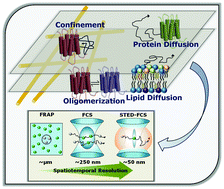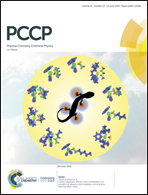Exploring membrane organization at varying spatiotemporal resolutions utilizing fluorescence-based approaches: implications in membrane biology
Abstract
Biological membranes are characterized by lateral inhomogeneities, termed as membrane domains, which are regions enriched with specific types of lipids and proteins. While the functional consequences of membrane domains are well understood, the physicochemical study of domains has proved to be elusive, mainly due to varying spatiotemporal scales associated with them. In this perspective, we provide an overview of representative experimental approaches based on dynamic fluorescence microscopy to analyze organization and dynamics of membrane lipids and proteins. We further elucidate variation of dynamics as a function of area of observation, a unique feature of biological membranes, and its modulation with membrane components such as cholesterol and the actin cytoskeleton. In terms of spatial resolution, we provide examples from super resolution techniques that overcome the diffraction limit encountered in conventional optical microscopes. We conclude that judicious use of a combination of approaches of varying spatiotemporal resolutions, commensurate with spatiotemporal scales of a given membrane process, would provide a comprehensive dynamic model of the biological membrane in terms of membrane organization, dynamics and function.



 Please wait while we load your content...
Please wait while we load your content...